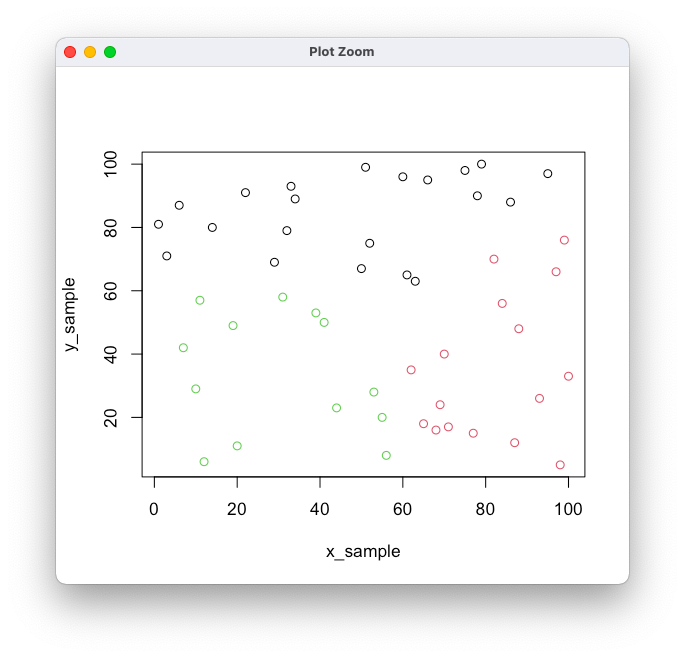QittaのR言語記事を散策していたら@roadricefieldさんの面白い記事があったので、自分でも解いてみることにしました。
問5
極値を求める関数を作成する問題。
関数
extremum_detector <- function(d, k){
# 補助関数
f <- function(a,k){
judge <- rep(c(1,-1),each=(k-1)/2)
sdf <- sign(diff(a))
all(sdf == judge)||all(sdf == rev(judge))
}
if(k < 3 || k %% 2 == 0) stop()
# extremum pointを返す
which(apply(embed(d,k),MARGIN=1,f,k)) + (k-1)/2
}
実行
5点近傍での極値
dev.off() data <- c(1, 2, 3, 2, 1, 0, 1, 0, -1, 2, 3, 2, 1) extremum.points <- extremum_detector(data, 5) plot(data, type="b") points(extremum.points, data[extremum.points],col = "red",pch=16)

3点近傍での極値
dev.off() data <- c(1, 2, 3, 2, 1, 0, 1, 0, -1, 2, 3, 2, 1) extremum.points <- extremum_detector(data, 3) plot(data, type="b") points(extremum.points, data[extremum.points],col = "red",pch=16)

コメント
embed関数なるものを使うと、系列を左から個ずつスライドして取り出すことができて便利(ただし順番が逆になる点のみ注意)
- 使用例
> letters[1:12]
[1] "a" "b" "c" "d" "e" "f" "g" "h" "i" "j" "k" "l"
> embed(letters[1:12],4)
[,1] [,2] [,3] [,4]
[1,] "d" "c" "b" "a"
[2,] "e" "d" "c" "b"
[3,] "f" "e" "d" "c"
[4,] "g" "f" "e" "d"
[5,] "h" "g" "f" "e"
[6,] "i" "h" "g" "f"
[7,] "j" "i" "h" "g"
[8,] "k" "j" "i" "h"
[9,] "l" "k" "j" "i"
問6
k-meansクラスタリングを実装する。
関数
my_kmeans <- function(x = x_sample, y = y_sample, k = 3){
# # 初期クラスタを選択
# cent_ind <- sample(seq_along(x), k, replace = FALSE)
# # 初期セントロイドたち
# cent <- cbind(x[cent_ind], y[cent_ind])
# cent <- cbind(c(91,57,41),c(26,61,14))
cent <- sample( (min(x,y)):(max(x,y)), k * 2, replace = FALSE) |> matrix(nrow = k)
i <- 0
while(1){
# セントロイドからの距離が最小となるような所属を求める
M <- rbind(cent, cbind(x,y)) |> dist() |> as.matrix()
belong <- M[-(1:k),1:k] |> apply(MARGIN = 1, which.min)
# 新しいセントロイド
cent_new <- cbind(tapply(x, belong, mean), tapply(y, belong, mean))
i <- i+1
cost <- sum((cent_new - cent)^2)
print(paste("iter = ",i,", cost = ", cost))
# costが1より小さかったらループ終了
if ( cost < 1 ) break
# セントロイドの更新
cent <- cent_new
}
# 所属を返す
return( belong |> as.numeric() )
}
実行
dev.off(); set.seed(2022) x_sample <- sample(1:100, 50, replace = FALSE) y_sample <- sample(1:100, 50, replace = FALSE) clst <- my_kmeans(x_sample, y_sample, k = 3) plot(x_sample, y_sample, col = clst )
